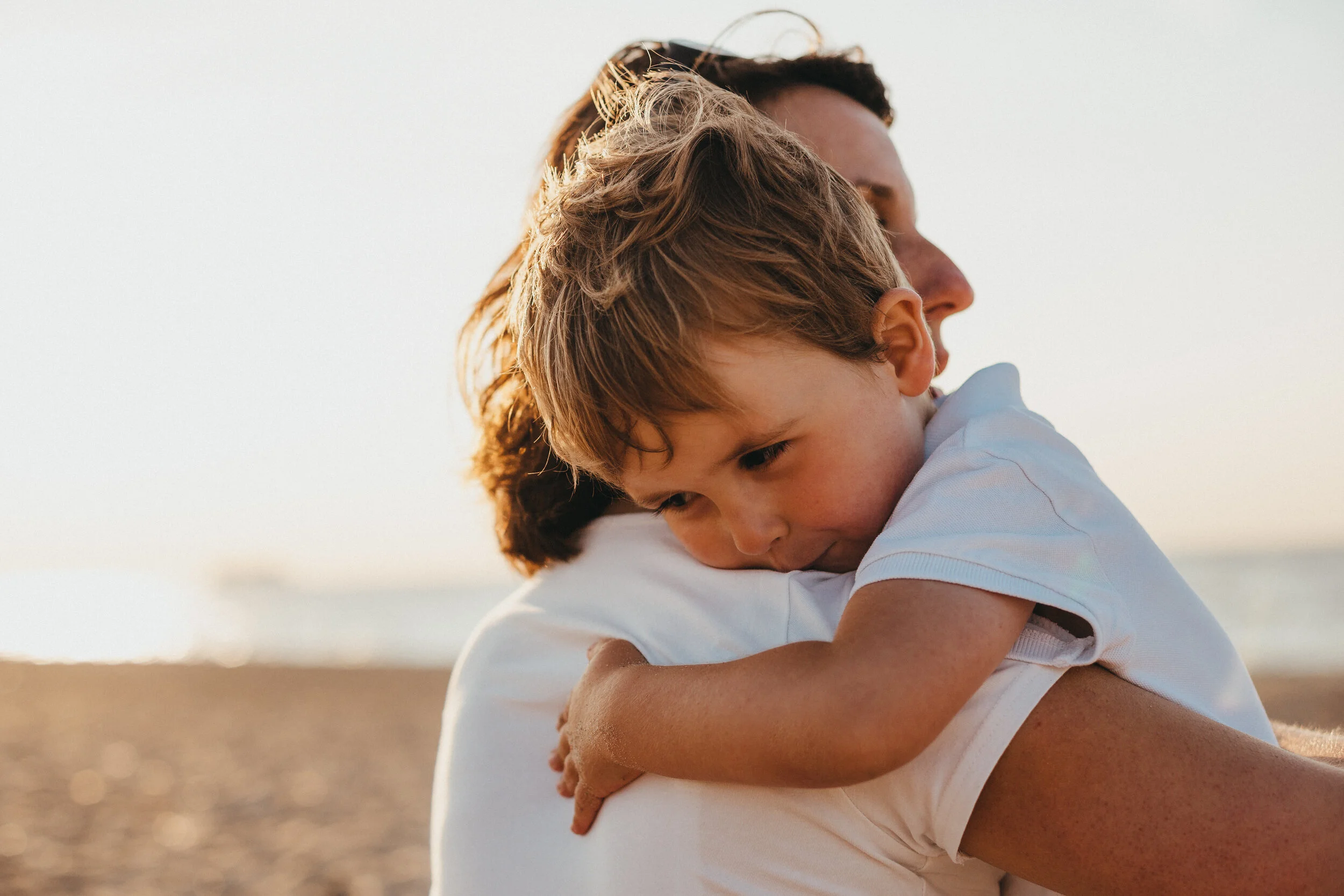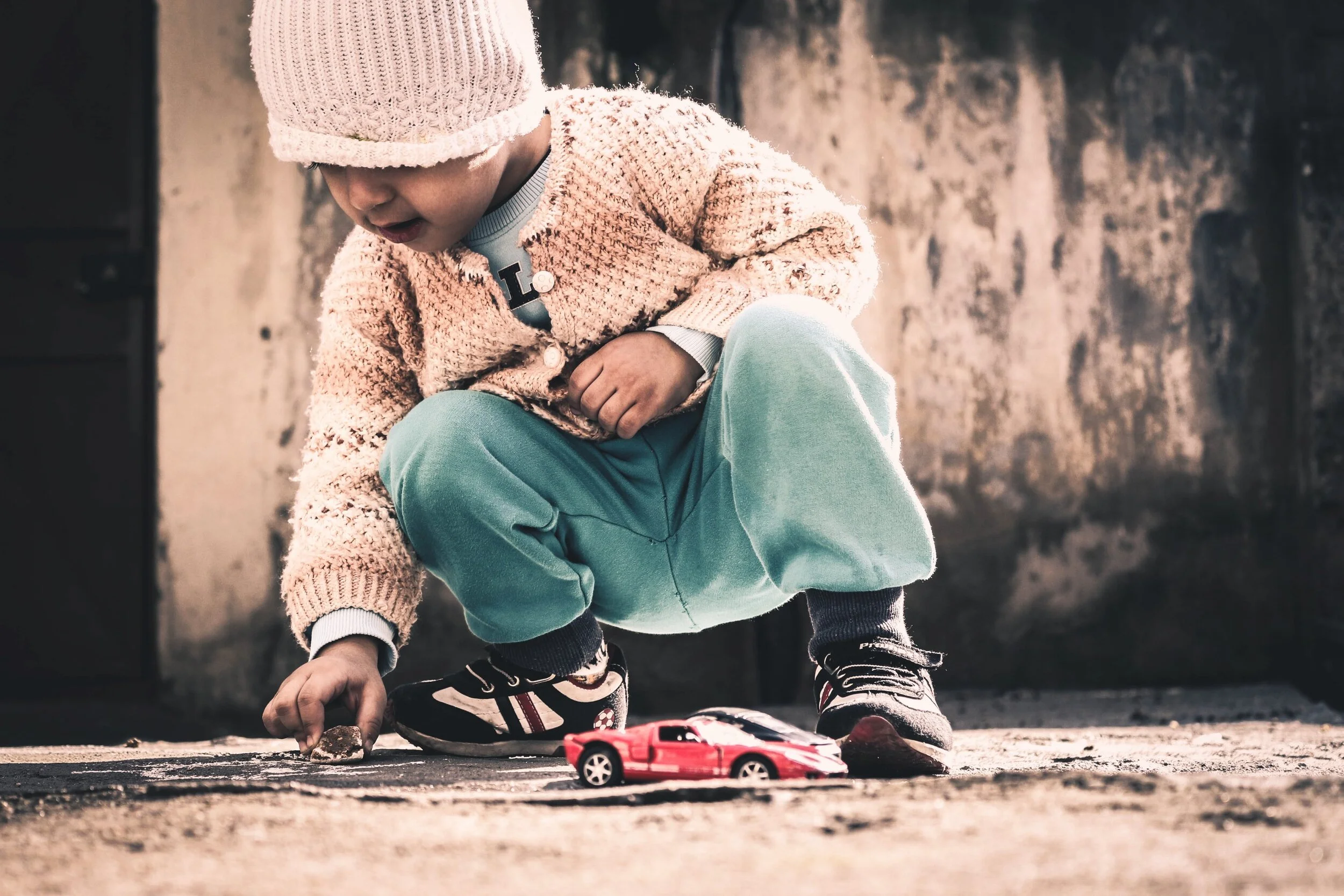Kids are incredibly resilient. One of the things I love about being a children’s therapist is that children are growing and developing every day—they can’t help but grow! This often means that they can progress through therapy at a surprisingly quick pace. Sometimes, however, children can have an experience that is so stressful that it overwhelms their capacity to cope. Parents of children who have endured a trauma often ask whether their child has been seriously affected, or if they may be suffering from PTSD. Keep reading to learn about the signs and symptoms of PTSD, and how these symptoms commonly show up in children.
Categories of PTSD Symptoms
In order to receive a diagnosis of PTSD, a child must have witnessed or directly experienced something that put themselves or a loved one at risk of serious harm. They must also have a number of symptoms in each of 4 identified categories: intrusion, avoidance, negative changes in mood or cognition (thoughts), and changes in arousal or reactivity. These categories are the same for kids as they are for adults, but children often express their symptoms a little differently than their older counterparts.
Intrusive Symptoms in Children
Intrusive symptoms are negative thoughts, memories, or feelings that pop up uncontrollably even though they are not wanted. Many people know that flashbacks can be a part of PTSD, and these are a common intrusive symptom. A child who is experiencing intrusive symptoms may feel like they are right back at the scene of their trauma, and living through it again. These symptoms aren’t under the child’s control, and they may be triggered by people, places, or situations that remind the child in some way of their trauma experience.
Flashbacks, recurring dreams, and strong physical or emotional reactions when reminded of a trauma are all examples of intrusive symptoms. Here’s a few ways they can manifest in children:
Frequent, recurring nightmares which may or may not resemble some part of the trauma experience: even if your child’s dreams are about something seemingly unrelated, they may be a symptom of trauma if they’re new and/or unusual for your child
Meltdowns, fear, or anger when your child encounters something reminiscent of the trauma
Repeatedly acting out scenes through play that are similar in some way to the trauma: this type of play is often very rigid, repetitive, and it may be hard for the child to shift focus to another activity once the play has started
“Spacing out” when something stressful happens
Avoidance Symptoms in Children
As you can imagine, it feels terrible to have intrusive symptoms that show up when you don’t want them. Children with PTSD begin to avoid people, places, or situations that remind them of their trauma as a way to protect themselves from distressing and overwhelming feelings. They may do this by avoiding external reminders (people and places), internal reminders (their own memories), or both.
In children, avoidance symptoms may look like:
Refusing to talk about the trauma, or insisting that they are not bothered by it
Avoiding people who resemble their abuser in some way
Reluctance to go near the place where the traumatic event occurred
Sometimes, the things a child avoids become more generalized over time: for example, a child whose mother had a heart attack may be afraid of driving by the emergency room where her mother was treated, but may also begin to avoid any doctor’s office.
Negative Changes in Mood or Thoughts in Children
Traumatic events can color a child’s entire worldview. People with PTSD experience changes in the way that they think, feel, and remember things. PTSD can make it very hard to trust other people, especially if your trauma was deliberately caused by another person. Many people with PTSD feel depressed, and they may unfairly blame themselves for what has happened. Some people find they can’t remember parts of their trauma experience.
Adults with PTSD are often able to put these negative beliefs into words: for example, “The world is a dangerous place” or “I’m just waiting for the rug to be pulled out from under me again.” For kids with PTSD, however, these feelings are harder to verbalize. Here are a few ways you might see negative changes in thinking and mood show up in children:
Low self-esteem
Lack of interest in seeing friends, or doing things they used to enjoy
Difficulty with attachment or bonding
A belief that they caused the trauma, or it was somehow their fault
Increased Arousal and Reactivity in Children
When a person is in danger, the brain and body go into fight-or-flight mode: a surge of adrenaline is triggered in the body, giving the person the energy they’ll need to either physically defend themselves or run to safety. For children with PTSD, their fight-or-flight response may have been activated so much that it now remains “switched on” a lot of the time. Increased arousal, also called hyperarousal, means that the brain is on high alert at times that it doesn’t really need to be, causing that surge of energy and adrenaline in the body. Reactivity means that a person with PTSD has very strong, fast emotional and physical responses to stressful situations.
Hyperarousal and reactivity can look a lot like ADHD in children. I have met a good number of kids who were diagnosed with ADHD before the adults in their lives became aware of their trauma history. Of course, it is possible for kids to have both ADHD and PTSD, but if a child’s symptoms came on very suddenly, it is worth ruling out any possible trauma. Here are a few other ways these symptoms can show up for kids:
Difficulty concentrating or learning
Sudden, severe tantrums that seem to escalate from “zero to sixty” very quickly
Being very sensitive to sounds or small movements
An exaggerated startle response
Having trouble falling or staying asleep
Aggression towards others, risky behavior, or self-harming behavior
How Long Do a Child’s Symptoms Have to Last to Be Considered PTSD?
It is normal and common for many children to experience at least a few of these symptoms in the days and weeks immediately following a trauma. It’s also common for a child to be in a state of shock, and have a hard time processing their feelings about what has happened at first. If your child’s trauma is very recent and they are struggling, it doesn’t necessarily mean they will go on to develop PTSD.
A child’s symptoms need to be happening for over a month in order for PTSD to be considered as a possibility. It’s also good to know that trauma symptoms may not show up right away: a child may not start showing signs of PTSD for weeks or months after a trauma.
Does Every Kid Who Experiences Trauma Develop All These Symptoms?
Not every child who survives a trauma event will develop PTSD. As many as 43% of American boys and girls experience at least one trauma event every year, and many of these resilient kids will be able to “bounce back” from the experience without developing PTSD. Nobody knows exactly why some children develop PTSD while other’s don’t, but we do know that children are more likely to be affected if their abuse happened as a result of violence or abuse, or if they have had repeated trauma experiences throughout their lives.
It’s also possible for children to experience a few of the symptoms listed above, without fully meeting the criteria for PTSD. PTSD is a label that can help us give a name to a child’s experiences and figure out what treatments will work best for them, but many kids have trauma-related symptoms that don’t exactly fit this mold. Trauma-focused therapy can be helpful for these children, as well, if they are bothered by their symptoms but don’t fully meet the criteria for PTSD.
I Think My Child May Have PTSD. How Do I Get Help?
If you suspect your child may have been abused, contacting a Child Advocacy Center near you is a good first step. Your local Child Advocacy Center can give you advice on what to do next, and they have trained professionals who can help determine whether a child has been abused in a way that minimizes a child’s stress and protects their emotions. The CAC may also be able to refer you to local therapists in your area who are trained in PTSD.
If you are looking for a children’s therapist for a child with trauma symptoms, I’d recommend seeking out someone with specialized training in a form of trauma-focused therapy, such as TF-CBT for older children, CPP for toddlers, or TBRI for children who survived long-term abuse or neglect.
Sometimes, grieving children can suffer trauma symptoms due to the nature of their loss. If you’re wondering what’s “typical” for grief and what might be a sign of something more serious, my book for grieving kids and caregivers might be a good place to start. Inside, you’ll find over 100 activities for caregivers and kids to do together to manage grief symptoms.
If you’re looking for more information on childhood trauma, check out my Help for Trauma page for more information and resources.





